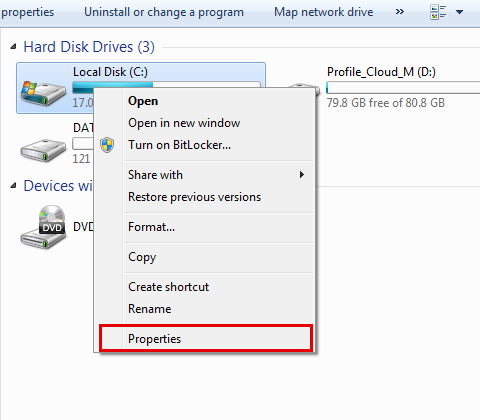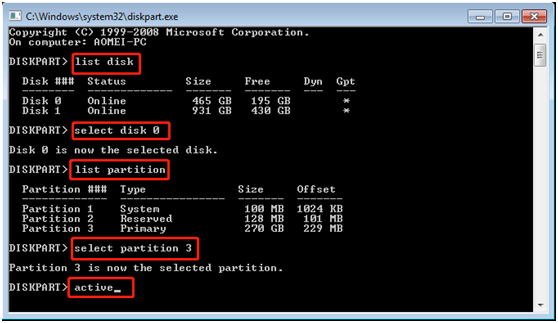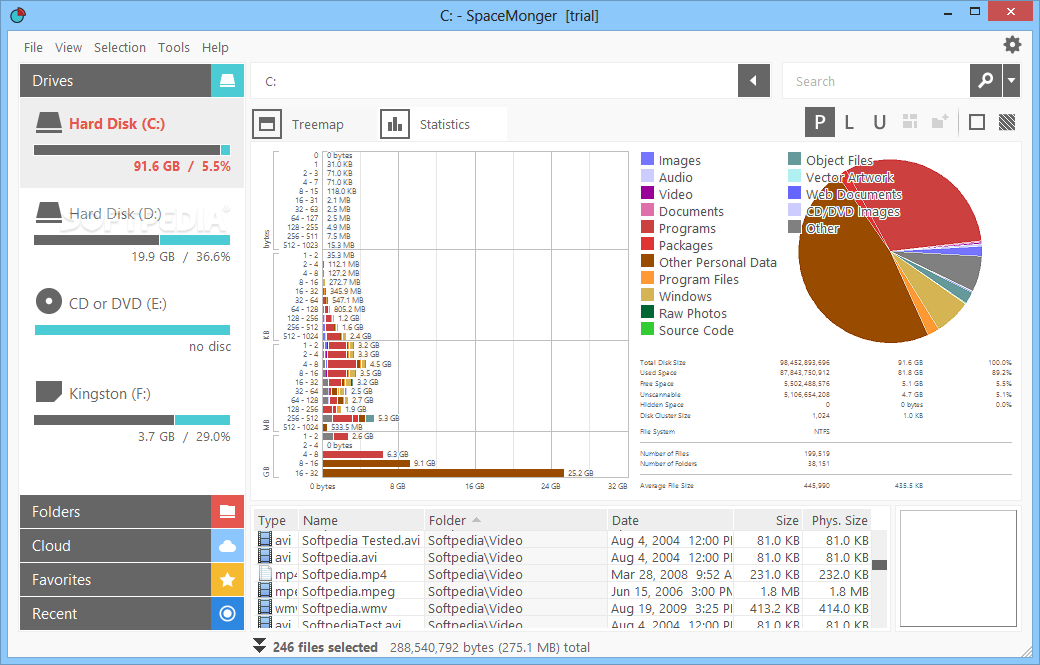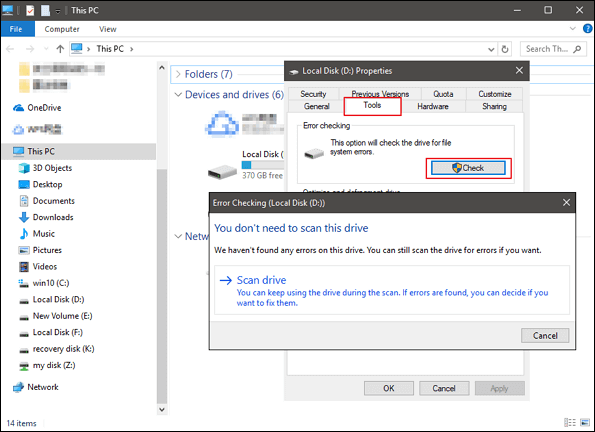

- #HOW TO RUN A DISK CHECK IN WINDOWS 7 HOW TO#
- #HOW TO RUN A DISK CHECK IN WINDOWS 7 WINDOWS 10#
- #HOW TO RUN A DISK CHECK IN WINDOWS 7 PASSWORD#
- #HOW TO RUN A DISK CHECK IN WINDOWS 7 PC#
- #HOW TO RUN A DISK CHECK IN WINDOWS 7 ISO#

#HOW TO RUN A DISK CHECK IN WINDOWS 7 PC#
#HOW TO RUN A DISK CHECK IN WINDOWS 7 ISO#
Then go Here for instructions for burning the ISO image
#HOW TO RUN A DISK CHECK IN WINDOWS 7 HOW TO#
If you do not know how to burn an ISO image, then download CDBurnerXP Pro to another Windows machine and install it. NOTE: Keep in mind that this is different than burning a file to a CD-ROM.
#HOW TO RUN A DISK CHECK IN WINDOWS 7 PASSWORD#
For Windows XP pro, ask whomever set up the machine what password they used. NOTE: For Windows XP Home, there is not password, just hit ENTER.

That may be because the drive is too large (250GB), but the tutorials for how to work around that are way too confusing and require a working Windows machine. It claims to have run successfully, but it doesn't actually help.īeyond Linux I got my hands on an XP install disk (SP3), and tried to boot that and run chkdsk, but it doesn't recognize my HDD. I'm reluctant to force a mount, because if it doesn't work it could further damage the drive.

If I try to mount the drive it fails too, telling me Windows has the NTFS partition marked as in-use. Specifically there are "cluster accounting" problems. In Linux, gparted can see the partitions on the drive, but says there are errors with the partitions and that I should run chkdsk. I generally use Vista, although the only thing I can boot into now is Ubuntu LiveCD, and even that takes a long time because it spends a while spewing errors about the HDD before it finishes booting. In Windows 7, you should look for another event ID - 1001, while in Windows 8 and Windows 8.1, it is 26226, the same as Windows 10.You might think this sounds like an easy problem to fix, but think again. This useful trick can also be performed in Windows 8 and Windows 7. Press OK and you will see the results of all disk checks stored in the Application log!.In the task pane on the right hand side, click Filter Current Log.In Event Viewer, expand Windows Logs on the left - Application:.Keeping a good anti-malware or anti-virus program on your computer should prevent or even solve this issue in most cases. The type of infection that most commonly starts Windows’s check disk program and start-up is malware.
#HOW TO RUN A DISK CHECK IN WINDOWS 7 WINDOWS 10#
Tip: See how to navigate apps by alphabet in Windows 10 Start menu. Press your Windows logo Key + R to launch your Run app and then type. Or you can simply type Event Viewer into the search box. Go to the Start menu -> All apps -> Windows Administrative Tools -> Event Viewer.But we will see how to navigate it quickly and see only the required logs, in this case, the results of the disk check. It can be confusing and intimidating for the regular user. The Windows Event Log contains tons of information about various events happening on your PC. So there is no way to know if it found any errors and whether any changes or corrections were made to the file system. Chkdsk, or rather autochk.exe when it runs during the boot sequence now shows only the percent complete. In Windows 10 and Windows 8, this was removed as part of Microsoft's effort to simplify the OS, same as the updated Blue Screen appearance. In Windows 7 and all previous versions of Windows, if some inconsistency was found on the file system, chkdsk would run automatically but it showed you the details. The only way to see chkdsk results if it was started automatically during the boot sequence is Windows Event Viewer.


 0 kommentar(er)
0 kommentar(er)
